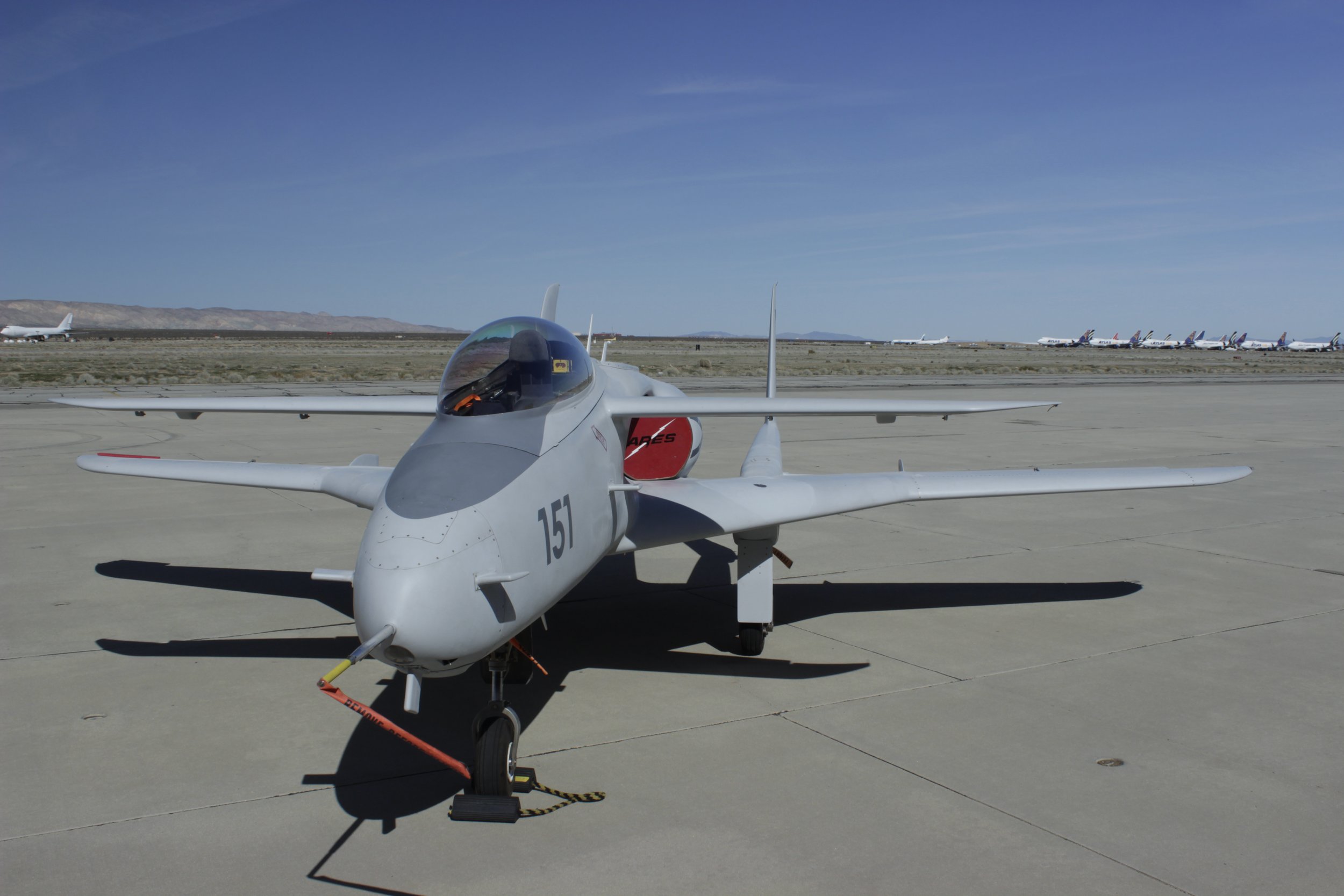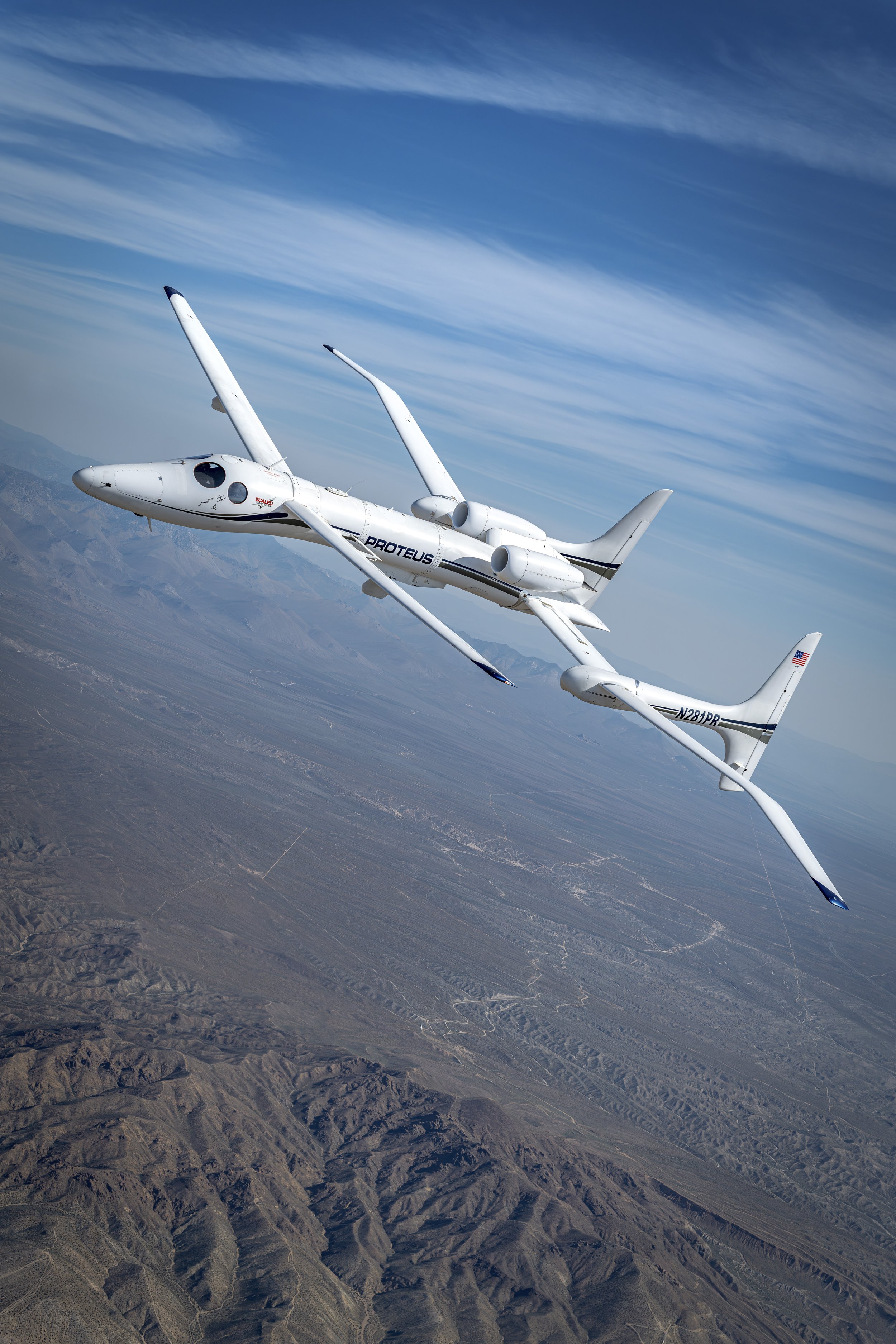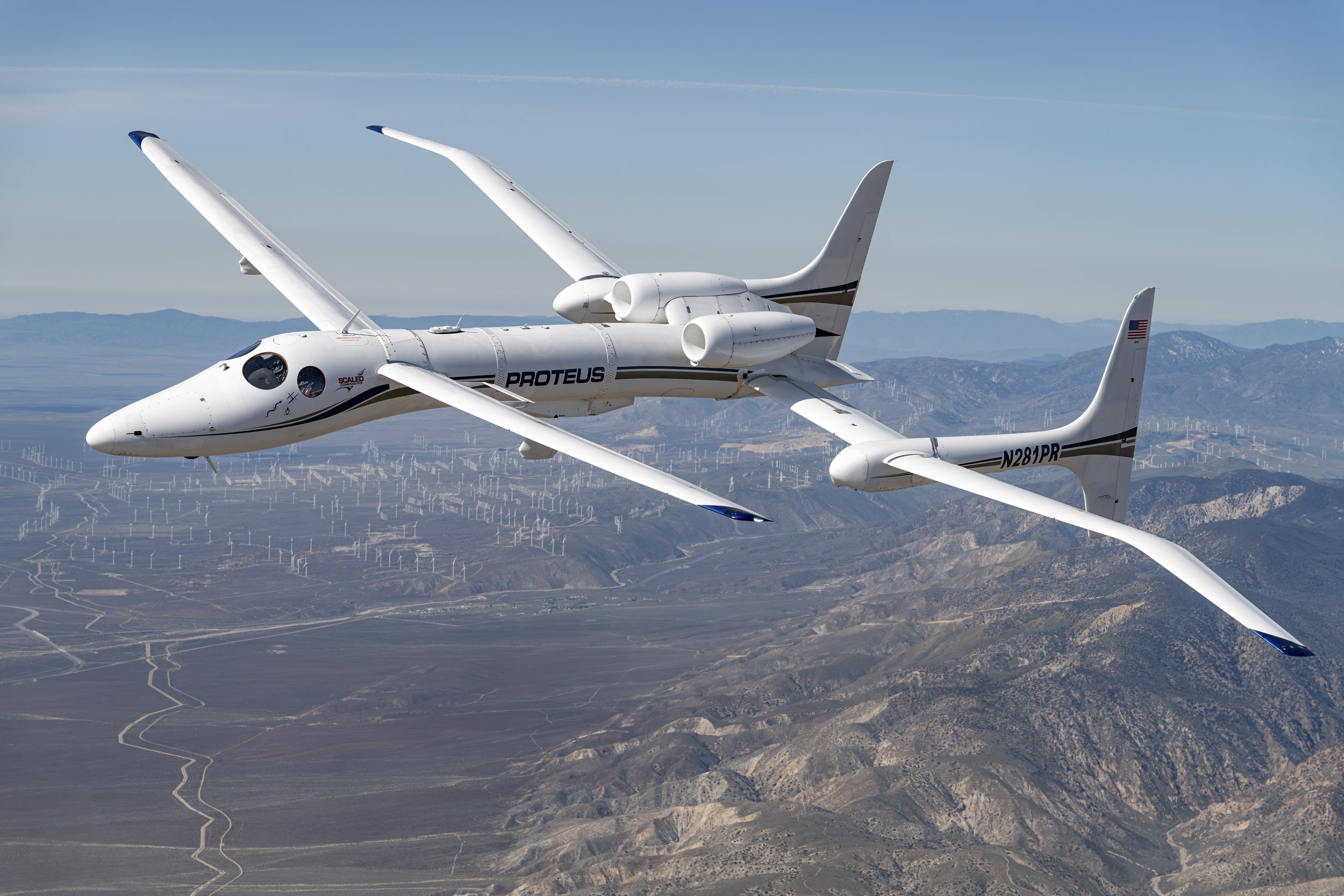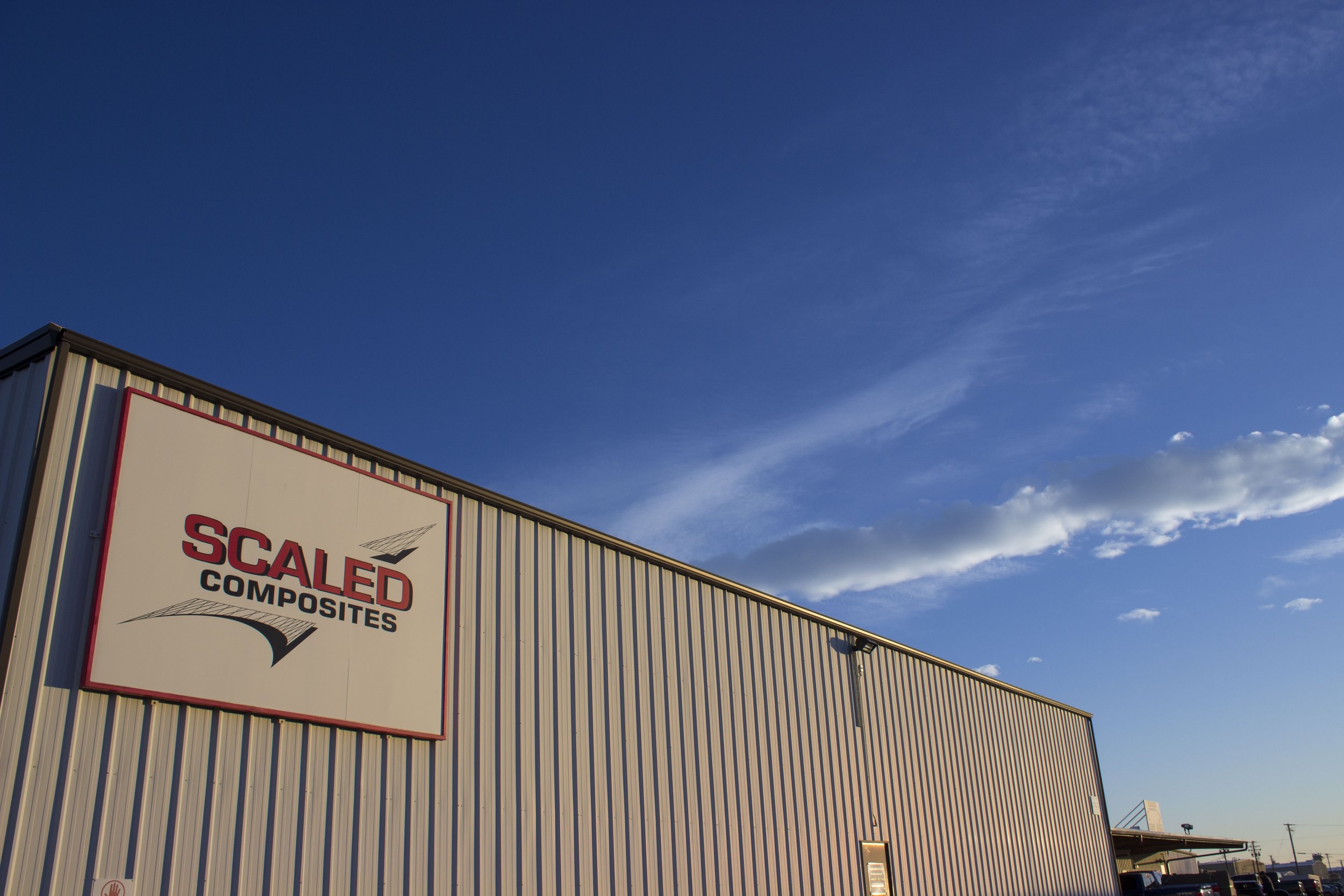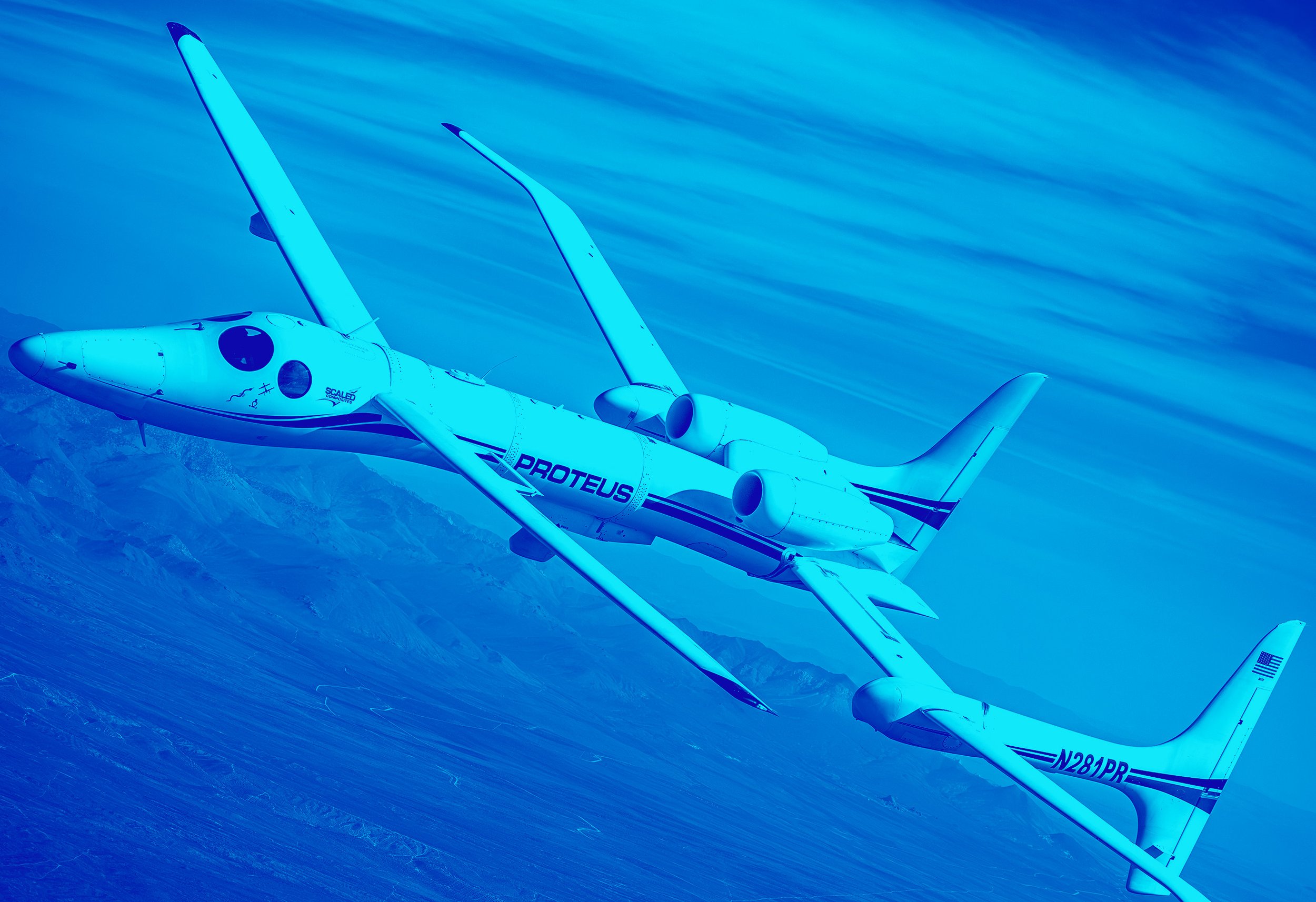
SCALED COMPOSITES
Scaled Composites is a specialty aerospace and composites development company continually working to push boundaries, prove out ideas, and influence the future. Founded by Burt Rutan in 1982 and located in Mojave, CA, Scaled has averaged one first flight of a unique, new airplane per year. Scaled designs, builds, and tests proof-of-concept, prototype, and milestone achieving vehicles such as Proteus, GlobalFlyer, SpaceShipOne, Model 401, and Stratolaunch.
Model 151 ARES
ARES (Agile Responsive Effective Support) is a full-scale proof-of-concept demonstrator that Scaled designed and built as a speculative venture to demonstrate and develop its capabilities and to assess its marketability. The primary goal of the initial flight test program was to develop flying qualities and performance suitable to perform operational missions, including: anti-helicopter, ground attack, and forward air control.
The aircraft has a unique configuration with two lifting surfaces – the wing and canard. The single-engine intake is offset to the left of the aircraft. This unique canard aircraft first flew on February 16, 1990and continues to operate as a payload demonstrator.
ARES has flown more than 430 hours, and demonstrated all of its design performance and handling qualities goals, including departure-free handling at full aft stick. During November of 1991, tests of the GAU-12/U gun system installed in ARES were performed, with outstanding results.
Model 281 Proteus
Proteus is a twin-turbofan, high-altitude, multi-mission aircraft powered by Williams International FJ44-2E engines – operating as a high-altitude long-endurance (HALE) vehicle, Proteus was initially developed in the late 1990’s to carry a 13-foot telecommunications dish. Long wings and canards provided a low wing loading needed for efficient high altitude loiter and the landing gear spread far apart between the booms and nose provide the space needed to carry the large dish. This one-of-a-kind high-flyer first flew on July 26, 1998.
Continuing past its initial mission, Scaled was able to utilize a unique aircraft: one that could fly at high altitudes, had a large underbody space that unique volumes could be externally attached to, and wings designed to not interfere with the volume beneath the fuselage. With long wings and a low wing loading needed for efficient high altitude loiter, Proteus has proven to be a versatile, high altitude, long-endurance research platform that has conducted over 1200 flights in the 25 years since it first flew. Missions for Proteus include telecommunications, reconnaissance, atmospheric research, commercial imaging, and space launch.
Scaled’s Proteus was named for the ‘old man of the sea’ whose nature continually changes in Greek mythology because one of its original design features allowed it to be reconfigurable. Looking closely, you’ll see fasteners around its midsection, indicating the barrel of its fuselage is removable. Although the airplane has never had an opportunity to fly a mission with the mid-section removed, Proteus has been involved in over 30 significant research projects and missions and true to its shape-shifting name origin has had these payloads on all areas of the aircraft. In addition to the standard payload ‘pod’ slung underneath the fuselage, Scaled has installed payloads of all types to the wings, the canards, the booms, the top of the fuselage, the nose of the aircraft, the tail – even wing extensions have been added on to Proteus to support missions.
Proteus has held three World altitude records in the FAI Class C1-e, Group 2, Turbojet category since 2000: altitude at 63,245 ft, altitude in horizontal flight at 62,385 ft, and altitude with a 1000 kg payload at 55,994 ft.
